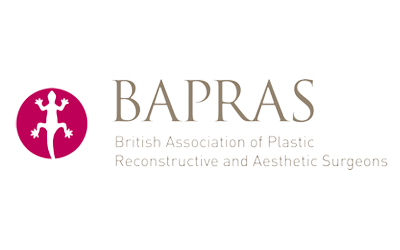Breast enhancement with implants is still one of the UK’s most popular cosmetic surgery procedure and has a high satisfaction rate: one study showed that 98% of women who had undergone a breast augmentation said that the results met or surpassed their expectations.
However, a common concern immediately after surgery is that their new implants look too high or slightly flat. This is where the term ‘drop and fluff’ originates. This is the informal description of the process that occurs after breast augmentation.
‘Drop’ refers to the breast implants settling into a more natural position as the muscles relax and any swelling and inflammation subside. The ‘fluff’ describes how the implants fill the lower pole of the breast as this relaxation occurs and appear softer and fuller like newly-plumped cushions.
At Karidis Clinic, we give patients comprehensive advice on what to expect after their breast augmentation surgery, including a rough drop and fluff timeline. Every patient heals differently, though, and if you have any concerns, the team is always on hand to answer any queries you may have.
When do breast implants drop and fluff?
Immediately after your operation, the implants may sit higher and look slightly different from how you had imagined. This is entirely normal due to tightness in the pectoralis (chest) muscle and swelling in the soft tissue post-surgery. It is more common when the implants are placed beneath the muscles but can also occur in sub-glandular implant placement.
As the muscles relax and swelling in the surrounding tissues starts to subside, gravity takes over, and the implants will drop slightly as your body adapts to the new breast shape. Most swelling will subside approximately after two weeks and over the following weeks the implants should fall gradually and fill the lower breast. You should expect your breasts to be in their final position at roughly three months post-surgery.
The type and size of the implant can affect the drop and fluff timeline. The exact process occurs with round and teardrop-shaped implants, but larger implants may drop slightly faster. Implants with a textured surface have become more prevalent in recent years as there is less risk of capsular contracture occurring, and they may take slightly longer to drop due to the friction between the implant and surrounding tissues.
Very athletic women with developed chest muscles may experience a longer drop and fluff period as the muscle is less malleable. Skin elasticity is also a factor; patients with better skin elasticity may find it takes longer for the breasts to drop, whereas looser skin will more easily accommodate the implant.
Another concern is when one breast implant drops quicker than the other. Again, this is nothing to be worried about and is perfectly normal, as our bodies – and breasts – aren’t perfectly symmetrical. The implant in the breast that has slightly more space will usually drop faster.
Do implants look bigger when they drop and fluff?
As the implant fills out the lower half of the breast, the implants can look bigger as they give the breasts a fuller, rounder contour.
Will my breast implants get smaller when they drop?
After your breast implants drop, they may appear to be smaller. However, they do not actually shrink in size. In some cases, the implant will be placed under muscle which makes them look smaller than during the initial consultation.
Will my implants move closer together as they drop and fluff?
After the breast implant drop and fluff recovery time, the implants will settle into their natural position. This is often when the final results become more noticeable, with the breasts appearing rounder and closer together.
Is dropping and fluffing more likely with overs or unders?
Your breast implants can either be placed over the muscle and behind the breast tissue (sub-glandular placement), or they can be placed under the muscle (submuscular placement), which is useful for those who don’t have much natural breast tissue. If you have implants under the muscle, you’re more likely to experience a slower drop and fluff process.
Drop and fluff timeline
Weeks 1-3: your implants might sit high at this stage, and your skin may feel tight. Your breasts may have puffy nipples causing them to appear cone-like in shape.
Weeks 4-5: your breasts may begin to drop and fluff. Each breast can start to do this at a different time.
Week 6 onwards: Your breasts will take shape – decreasing on the upper breast and the lower breast becoming fuller.
Is there anything I can do to speed up the drop and fluff process?
You are advised to wear a specially designed surgical support garment in the weeks after your surgery. This will reduce swelling quicker and help shape your breasts, as the implants and tissues are supported during the healing process. You will also be advised about post-surgical massage, which can help to soften any breast tightness.
The most important message we can give to patients is to be patient. It typically takes three months for your breasts to fully settle into the desired position and may even take 12 months to achieve the final contour. At this stage, they should also feel softer and more natural.
If you notice your breasts feel hard or change shape, typically caused by scar tissue forming a capsule around the implant and becoming constricted, then get in touch to discuss your options.
Do breast bands help implants drop?
Breast bands are worn above the breast implant bulge, just below the collarbone and are a good way to encourage the implants to drop and fluff, before settling into a natural position.
For more advice on breast implant drop and fluff and anything breast-implant related, call us on 0207 432 8727 to arrange a consultation. Here at Karidis Clinic, we offer a range of other breast surgery procedures including fat transfer to the breasts, nipple reduction, areola reduction, breast asymmetry correction and hybrid breast augmentation.
















